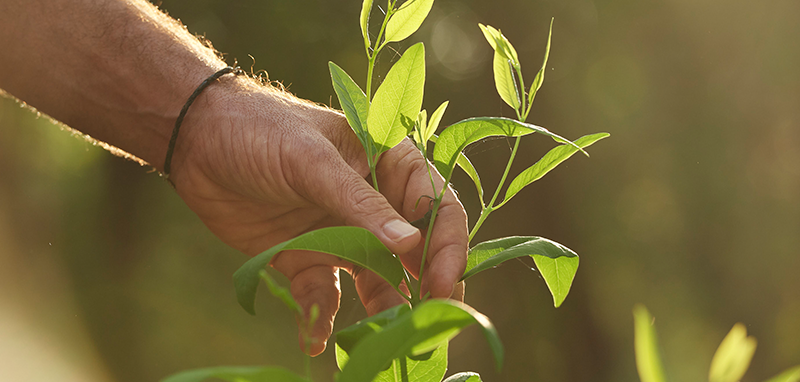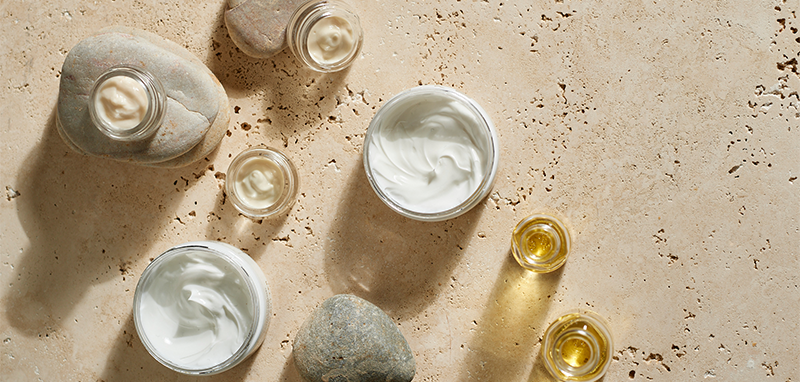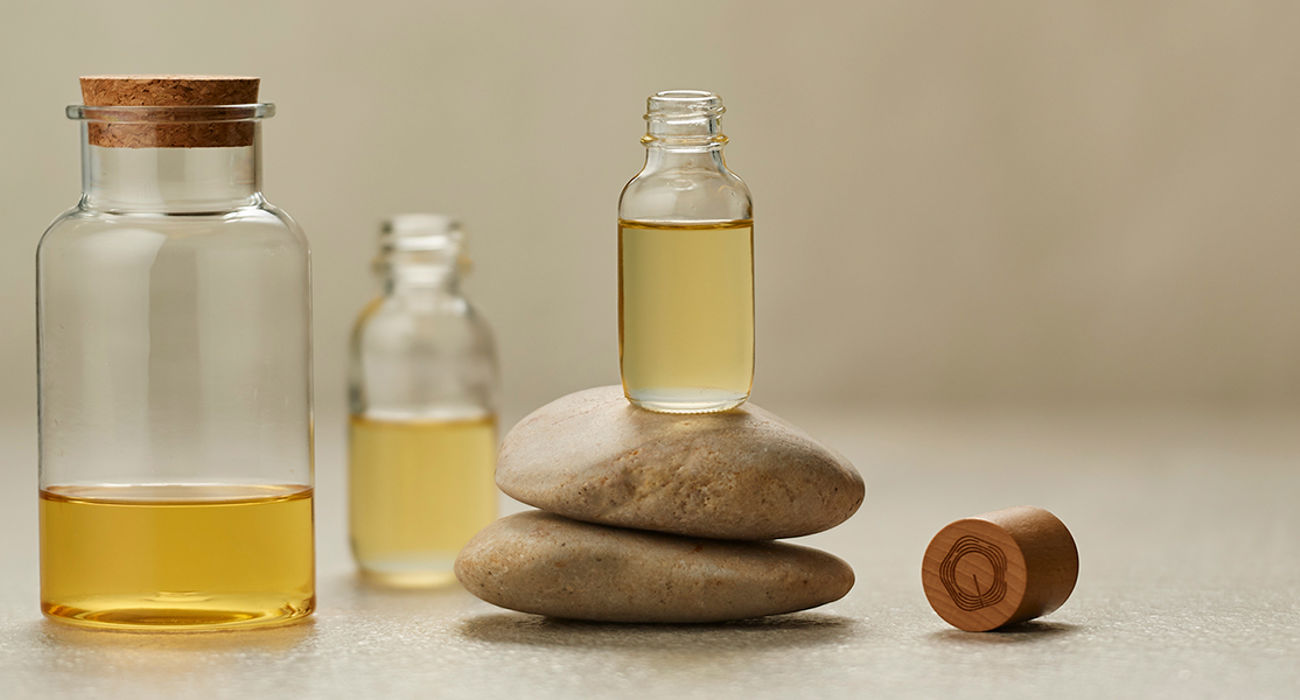There is an increasing demand, from both product formulators and end consumers, for the next best ingredient, formulation, or delivery system in the beauty and fragrance industries.
It is a widely held belief from consumers that natural is better than synthetic, however, while natural ingredients are often favoured for multiple reasons, natural ingredients and lab-made innovation can work hand-in-hand and alongside one another to create customised cosmetic formulations and fragrances.
As sustainability and the importance of ingredient sourcing and traceability comes into focus from all perspectives, the question needs to focus less on natural versus synthetics and more focus needs to be given to efficacy, what works and the source of ingredients.

Science and nature, a pair in fragrance
Fragrance creation is often made up of both natural and synthetic oils, partnered together to develop a unique scent; both are of high importance. Natural fragrance oils, or aromatics, are physically acquired from plants using techniques such as distillation and extraction, whereas synthetic oils, whose molecules are designed to mimic the aroma of natural ingredients, can be derived from petrochemicals or by chemically converting plant products such as carbohydrates.
As synthetic fragrance oils are man-made and have been chemically created, there is a variety of notes and scents that are available. While they may draw inspiration from natural plant-derived fragrance oils, they can’t completely replicate them. As an example, Indian sandalwood (Santalum album) oil possesses over 125 major and minor chemical components that cannot be replicated by artificial synthesis. Here, synthetic reproductions can only replicate the main aroma constitute of natural sandalwood, known as an aroma substitute.
Natural and synthetically made fragrance oils have their own place in the fragrance industry. Perfumers utilise both ingredients which have a specific role working in tandem to complement one another and enhance certain notes. Synthetics are used to repeatedly produce the general aroma signature of a natural ingredient while natural oils provide the subtle specialty nuances to a fragrance.
As an example, to create a base in a fragrance using the odour profile of Indian sandalwood, a blend of natural sandalwood oil is combined with synthetic oils for olfactory purposes, and/or to lower the price. It is also worth noting that synthetics are primarily designed to produce an aroma with little therapeutic effects, whereas natural essential oils have a dual role in producing well-being and aroma through functional fragrance.
There is a misconception that natural fragrance oils may not be customisable like synthetics are, however, this is not the case. Natural Indian sandalwood is one example where the odour profile can be tailored precisely, depending on the individual needs of a particular customer.
With an ongoing demand for more environmentally conscious and sustainable products, consumers will continue to gear toward natural products and ingredients. However, it is clear the union of both natural and synthetic oils will also hold a strong place in the fragrance industry, working together in aroma profiles to bring to life a creator’s vision and ultimately provide consumers with the perfumes they are longing for.

Nature is at the heart of all lab-made innovation in beauty
The beauty industry is growing at an exponential rate, and with consumer demand for new products and faster results, brands are constantly striving to best fulfil this appetite. Alongside this growth comes an increased demand from consumers for honesty and transparency on the origin of ingredients. This has led to the increasing popularity of products containing potent natural active ingredients that are sustainably and ethically grown such as Quintis Indian sandalwood.
There is also a place within formulations for both naturally derived ingredients and those genetically modified and made in a lab, to truly create an inclusive industry that serves all customer needs. This is where biotech synthetics play their part.
Biotech synthetics are a growing technology in the beauty industry, that uses living organisms and their derivatives to produce products and ingredients in a lab. This innovation is welcomed in the beauty industry to rid formulators of outdated ingredients that are animal derived.
The introduction of biotech synthetics doesn’t replace the use of naturally derived, ethical and sustainably produced ingredients. However, it does allow them to work harmoniously with natural oils, offering a more sustainable alternative than a native origin may have offered. With natural oils such as Indian sandalwood offering proven therapeutic benefits in addition to an aroma and biotech synthetics providing aroma, both can be included harmoniously in skincare formulations and harnessing functional fragrance.
Recent studies on natural cosmetic benefits surpass the known cosmetic benefits of biotech synthetics. An example of this is a recent study that explored the efficacy of Indian sandalwood oil when topically applied to the skin, with the results proving that it is a more powerful antioxidant than powerhouse vitamin E, making it a great addition to be considered in skincare products.
With new discoveries surfacing on potent active natural ingredients, it is no surprise that consumers are gravitating towards products that contain a majority or mix of naturally derived products and ingredients. A focus group[1] on millennial skincare consumers found that two third of respondents (64%) would be likely to purchase a product that smelt like sandalwood. In that same study, 8 in 10 millennial consumers would consider purchasing a premium skincare product that used sandalwood oil as an active ingredient after learning about its multifunctional skin benefits, including anti-inflammatory, anti-tyrosinase and antimicrobial activities.
There is no existing evidence available on the aromatherapy benefits of biotech synthetic ingredients in cases like natural Indian sandalwood. The aroma and chemical profile of natural sandalwood is much more complex.
[1] Metrix Focus Group, Perceptions of Sandalwood, 2021

Sustainability and traceability, the heart of the beauty and fragrance industries
Our evolving understanding of ingredients in the beauty, personal care, fragrance, and wellness space in general, means that we can no longer live in a black-and-white world where natural necessarily mean better and synthetic products are inherently dangerous because they are created in a lab.
Regardless of how an ingredient is produced – whether it be natural, synthetic, or made through biotechnology – one of the most important practices in production is traceability and sustainability.
Brands that have ingredients or products with proven efficacy and that are fully transparent about their process and committed to the sustainable supply of their ingredients into the future will ultimately continue to attract the right formulators.
